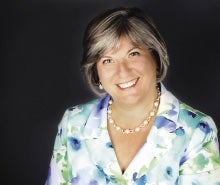About three years ago, the Edward M. Kennedy Community Health Center — which had just been renamed to honor the longtime, late United States senator — did some strategic planning to map out its future.
With a new name, the organization had a new goal: Continue to deliver cost-affordable care to individuals who may not otherwise have access to it, but reach more patients. The Kennedy Community Health Center — which was first incorporated in 1972 as the Great Brook Valley Health Center Inc. — has a long history of serving patients in Worcester, and a fast-growing office in Framingham. But more could be done. In a few months, the execution of that plan will continue with a third site opening in Milford.
The health center has grown from serving 20,000 patients in 2009 to 24,000 patients in 2012. By 2015, it hopes to reach 40,000 patients. “When Massachusetts health care reform came online, community health centers like ours were some of the first to raise our hands to help with outreach and enrollment, making sure people were coming into our doors and seeing if they can qualify for any additional assistance,” said Antonia McGuire, president and CEO of the Kennedy center. “We spent a lot of time on our strategic plan to see how we could add capacity given the demand.”
The Kennedy Community Health Center is one of 50 across the commonwealth that provide care to more than one out of every eight state residents, making health centers the largest form of primary care delivery in Massachusetts.
As health care reform has taken shape, community health centers are playing a vital role in not only providing access to vulnerable populations, but doing it in a cost-effective manner compared with the rest of the health care system. “The community health center equation has always been a triple aim: Provide access to quality care at the right cost,” said James Hunt, president of the Massachusetts League of Community Health Centers. “Community health centers have transformed to become providers of choice for individuals, rather than a provider of last resort.”
But there are challenges. The Kennedy center has significantly ramped up its operations during the past few years, which means it also needs more doctors. To help entice medical school students to pursue careers as primary care physicians, the Kennedy center offers medical school loan repayment programs, for example. Many prospective physicians are also attracted to the core values and community-focused nature of community health centers in general. “The care we offer is community based and integrated,” McGuire said. “We match our services with those most in need.”
Another challenge is, as always, funding. The Kennedy Community Health Center is a fee-for-service organization, but it will not turn away patients who can’t afford care. While the center is funded through a combination of federal and state community health center grants, its biggest federal grant only covers about 8 percent of annual operating costs. But the Central Massachusetts community has stepped up to the plate. For example, the MetroWest Health Foundation has been instrumental in the organization’s growth in Framingham and Milford. The UMass Memorial Health Care Community Benefits Program has supported the center as well. Both organizations each pledged $1 million in 2012.
McGuire has also looked to cost efficiencies that do not impact the quality of care as a way to save money. Through a partnership with UMass Medical School’s uHealth Solutions program, the center recently saved a significant amount of money by implementing a central phone-answering service across the organization’s three sites.
While the Kennedy Community Health Center provides a variety of services, from comprehensive medical, dental and specialty care, to health education, nursing, optometry and health education, along with discount pharmacy services, it continues to rely on yet more partnerships to provide the best care for patients. Hunt says the ability of community health centers across the state to forge partnerships with some of the world’s leading medical facilities is what makes the quality of care at places like the Kennedy center as good as higher-cost options.
The need for community health centers is not going away — in fact, it’s increasing. More than 70 percent of the 20 million people in the U.S. who use community health centers are at or below the poverty line and Hunt says that since 2009, 164,000 new patients have begun using community health centers.
Read more

